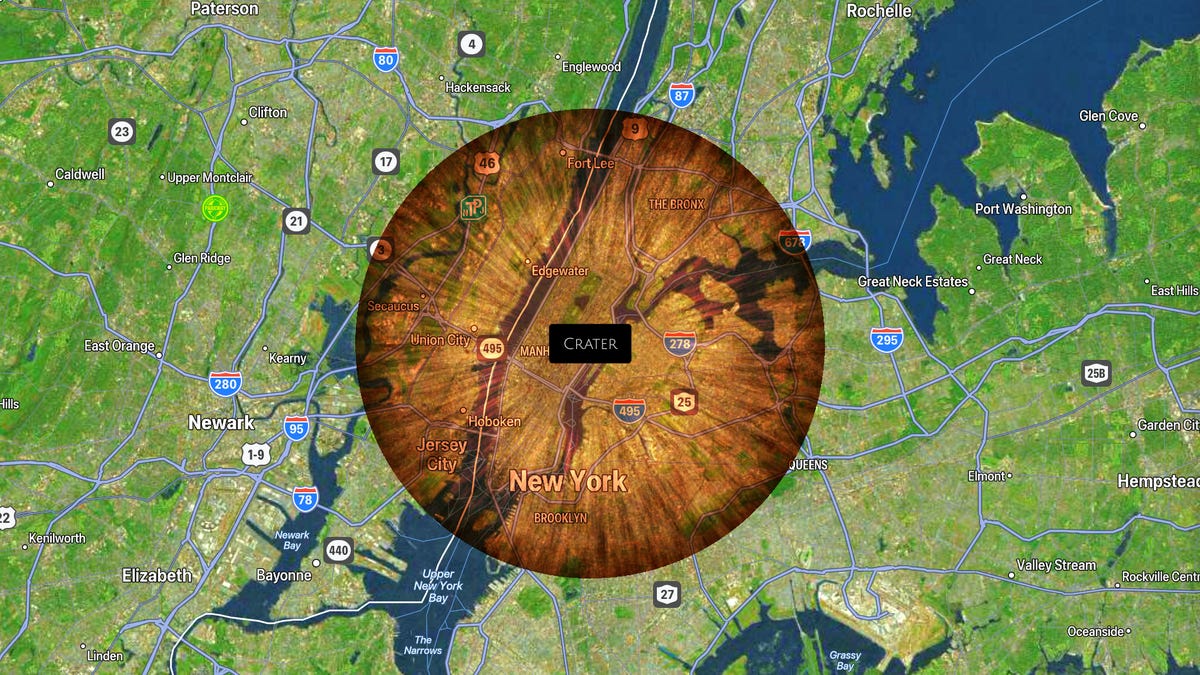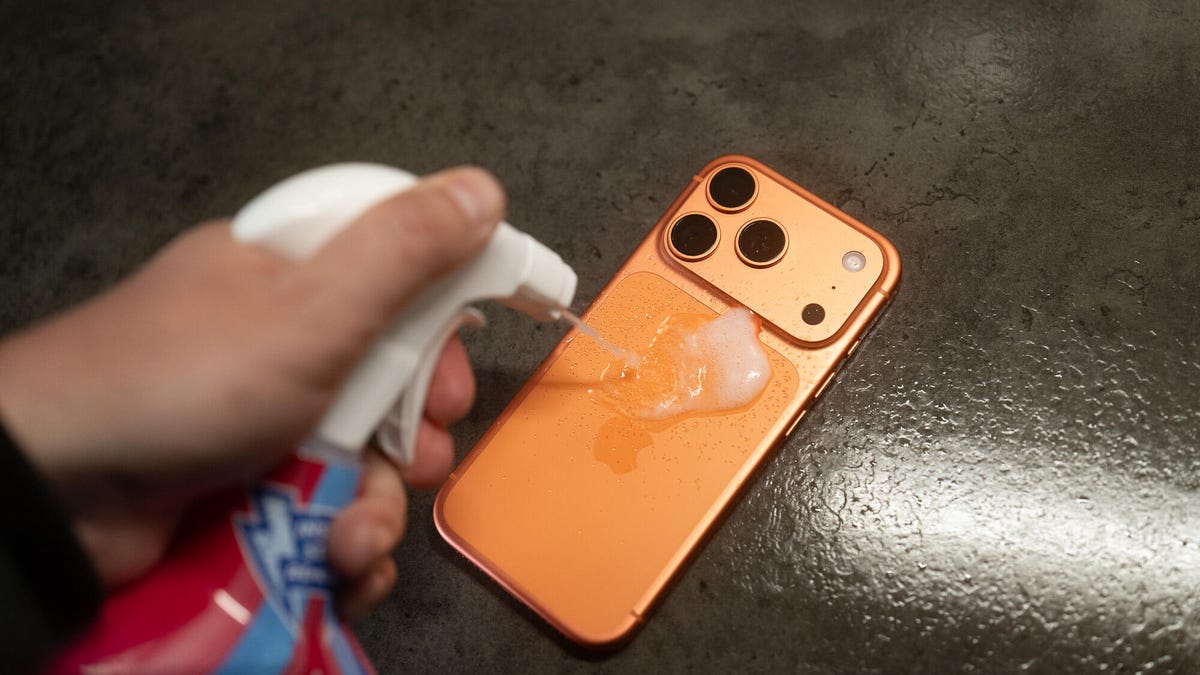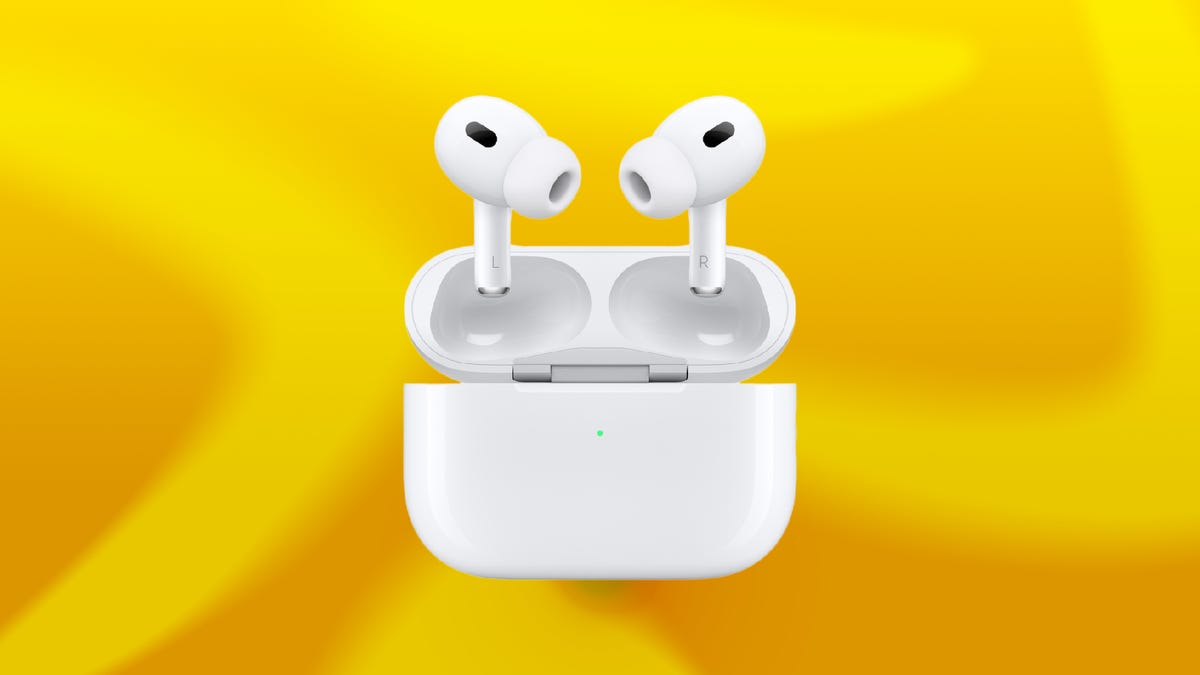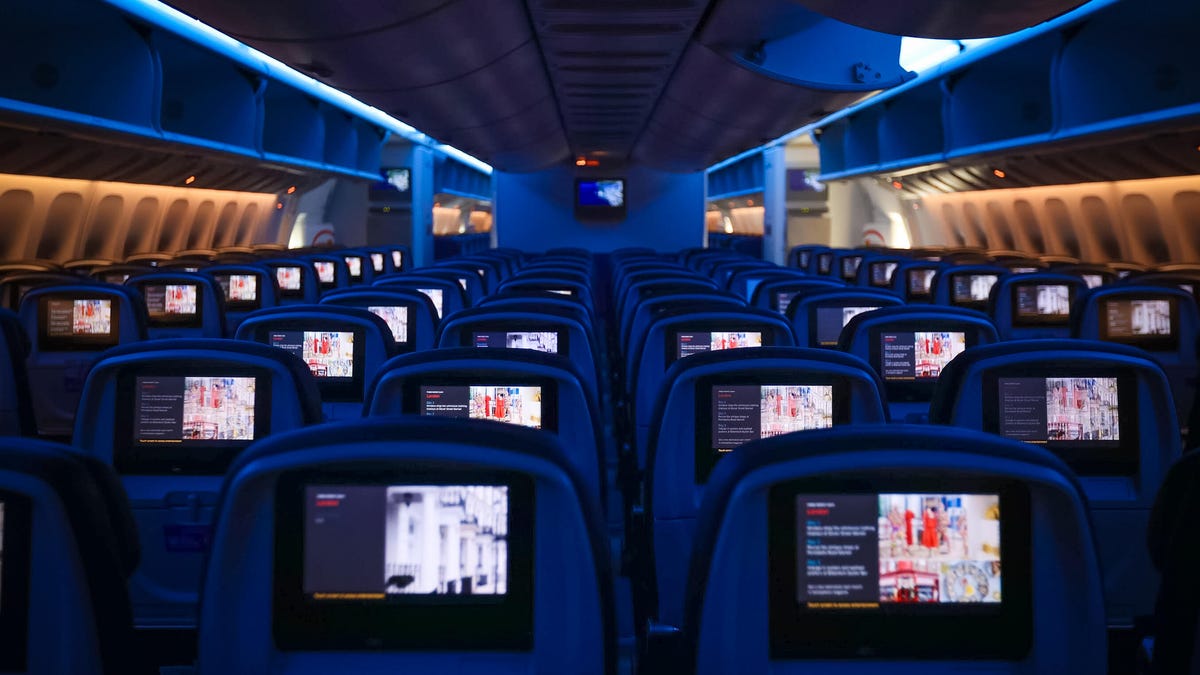Technologies
This Is What Might Happen if an Asteroid Crashed Into Your Town
An online simulator lets you launch an asteroid at a locale of your choosing and ponder the potential outcome.

If an asteroid made of pure gold, with a diameter of 2,600 feet and blasting at 77,000 miles per hour, came in at an angle of 48 degrees and hit New York City’s Upper East Side, aka around where I live, I unfortunately now know what would happen.
Myself and 6,363,353 people would be vaporized within the space rock’s resulting crater, a massive chasm over half a mile deep. The shard would release more energy than the last volcanic eruption of Yellowstone, a colossal disaster that, thousands of years ago, spewed ash, magma and debris far enough to cover most of the continental United States.
Or at least that’s what I learned from an asteroid simulation website this afternoon while sipping on a cup of coffee.
The Asteroid Launcher is a free, data-driven concept created by Neal Agarwal, a developer widely known by his online persona: neal.fun. Agarwal’s goal is basically to blend immense arrays of data and interesting mental dilemmas to form clever, interactive online thought experiments, like this one that tells you what kind of devastation would follow an asteroid smashing into your town.
«The main inspiration,» Agarwal told me over email, «was definitely growing up watching movies like Deep Impact and Armageddon! I’ve always wanted to have an online tool that would let me test out different impact scenarios and see the effects.»
But of course, the key here with Asteroid Launcher lies in Agarwal’s pseudonym.
There are thankfully no known significant impact threats for the next hundred years or more, according to NASA — and, worst case, the agency is well on its way toward generating a sort of asteroid defense system with the resounding success of its DART mission, which took place earlier this year.
Still, it doesn’t hurt to cater to our intrusive thoughts once in a while. Just for fun.
Peruse Agarwal’s projects and you’ll find an awesome array of rabbit holes to get lost in.
The Size of Space progressively presents you with larger and larger objects, starting with an astronaut and making its way through stars so enormous they make our sun look like a feeble yellow pom-pom. Spend Bill Gates’ Money offers you $100 billion to spend on items ranging from a 12 pack of Coca-Cola all the way to a literal Boeing 747 commercial airplane. It shows you how much money multibillionaires are working with day to day.
And my personal favorite, Absurd Trolley Problems takes you on an illustrative, ethical journey based on English philosopher Philippa Foot’s fictional scenario where an onlooker has the choice to save five people in danger of being hit by a trolley — except the only way to save them is by killing one person in their stead. The hard part about this isn’t so much the decisions, but the fact that you should, hypothetically, remain consistent in every one of those decisions.
«I’ve kept a big ideas list since I was 16, and have recently passed 1,000 project ideas written down (most of them terrible),» Agarwal said. «The ideas can come from everywhere, from books and movies to a conversation with a friend. I think the important thing is writing them down and being as open as possible to new and weird ideas. Sometimes two to three bad ideas can combine and form a great project.»
Which brings us to Agarwal’s latest endeavor: Asteroid Launcher.
You begin by designing your own asteroid, entering a material, rock diameter, speed and impact angle. Then, you can select any location on a realistic map to the left of the screen. All that remains, at that point, is to click a giant button that says LAUNCH ASTEROID.
Boom.
You arrive at a page that tells you, theoretically, what you’ve just done to your location of choice.
These results are surprisingly detailed, as Agarwal embedded his code with asteroid information gleaned from academic science publications, such as a doctoral thesis about asteroid impact risk and a peer-reviewed population vulnerability model authored by experts from NASA, Lancaster University and the University of Southampton.
However, it does appear that some question the results of Asteroid Launcher — one scientist, for instance, tweeted his preference for the more old-school Earth Impact Effects Program to satisfy doomsday cravings.
Though, to that end, Agarwal says the Earth Impact Effects Program uses the same equations as Asteroid Launcher because both are based on a research paper written by Gareth Collins, an asteroid impact expert at Imperial College London. «They’ll give pretty much the same results,» he explained, noting that Clemens Rumpf, an asteroid risk expert who formerly worked at NASA, also contributed to his project.
«The goal of neal.fun is to bring back the weird and fun internet!» Agarwal said. «I grew up at a time when the internet was full of strange and fun flash games and experiments, and watched that all slowly go away as social media took over. Now the web is finally becoming powerful enough again to create fun digital experiences, and I’m excited to keep exploring the potential with new projects.»
On Asteroid Launcher, once you’ve pressed the big red button, scroll down a little, and you’ll catch far more than fatalities spurred by your asteroid design.
Agarwal tells you how many gigatons of TNT your explosion equaled, how many people would receive second-degree burns if your asteroid was closer to a huge fireball, the radius within which peoples’ eardrums would rupture from the shock wave and within which homes would be completely leveled from wind speeds upon impact.
It’s darkly obsessive to check out as many asteroid designs as you can. Immediately after making my dream gold impactor, I plugged in the stats of the asteroid that NASA’s DART spacecraft punched into in an attempt to change the relatively small space rock’s orbit around a larger hunk of space rock.
I couldn’t get things to be completely accurate, because this is so theoretical, but here’s what I came up with.
Dimorphos is considered to be made of «rubble,» aka a bunch of materials, so for material, I went with generic stone. It’s actually about 525 feet in diameter, but Asteroid Launcher requires some rounding. I put in 500 feet. As for speed at time of impact, a parameter we don’t know, I popped in the speed at which the DART spacecraft hit the rock, because, well, why not? That came out to something like 14,400 miles per hour, which had to be rounded as well. I set the location to London and angle to 90 degrees for no reason whatsoever.
Here’s what we got for results — they’re much less shocking than my first ridiculous, gleaming monster asteroid.
My next plan was to input the parameters of the dinosaur-killer asteroid, Chicxulub. But get this: It was so gigantic it didn’t even fit in the diameter section.
«Asteroid impact science is still an evolving field and not everything is known yet,» Agarwal said. «Generally the larger the asteroid, the more uncertain we are about the effects.»
Technologies
Can Chemicals Turn My Orange iPhone 17 Pink? Here’s What I Found Out
There are reports that some cosmic orange iPhone 17 Pro handsets are turning pink. I threw chemicals at my iPhone to see what would happen.

A recent Reddit thread suggests that it’s possible for a cosmic orange iPhone 17 Pro to turn vibrant pink. As PCMag’s Eric Zeman noted, it’s likely that the phone has been discolored by cleaning substances that affected the finish, turning it from vibrant orange to a wild hot pink. Sure, this might technically be a fault, but in all honesty I love pink phones and the idea of a hot pink iPhone 17 Pro filled me with joy. So I wanted to see if I could test the theory and see just what color-changing effects various household cleaners might have on my phone.
It’s important to note here that the iPhone 17 Pro I used was bought by CNET for the purposes of testing. Had I paid over $1,000 of my own money I wouldn’t be so reckless in smearing it with chemicals that could potentially irreparably harm it. And you shouldn’t either. If you need to clean your phone, do it safely. Disclaimer aside, let’s dive in.
The chemicals
I bought two chemicals to test this out. Zeman explains that it may be oxidation that caused the color to change and that hydrogen peroxide could do this. I couldn’t find this over the counter in the UK, so I instead bought an «oxy-active» stain remover spray that, among other things, contains «oxygen-based bleaching agents» which sounded ideal. Apple also clearly states «don’t use products containing bleach or hydrogen peroxide» on its support page so, naturally, I bought some thick bleach too.
Oxy application
I started by spraying the oxy cleaner on a microfiber cloth until it was noticeably wet from the liquid and then liberally applied this all over the rear of the iPhone. The Reddit user with the affected phone showed that it only affected the metal parts, not the glass back panel, so I made sure to focus my attention on the sides and camera bar.
With the phone well and truly doused in chemicals that have no business being anywhere near a phone, I left it to sit and think about what it had done for 30 minutes — after which time I wiped it dry and took a close inspection. Disappointingly, my phone was still factory orange, rather than «what the hell have you done to your phone» pink. Time to move on.
Bleach blast
I opened the bleach and trying hard not to think about my days as a middle school cleaner, applied a liberal blob of the stuff to a cloth and smeared it over the defenceless phone, concentrating again on the metal areas. I definitely should have worn protective gloves for all of this so please make sure you take better care of yourself than I do if you do anything with bleach.
Again, I gave it a 30-minute settling in period before cleaning it off and inspecting the results.
The phone remained as orange as ever, looking as box fresh as it was the day before when it was, indeed, box fresh. The orange color hadn’t changed and now almost 24 hours later there’s still no sign of discoloration of any kind.
Is the pink iPhone 17 real?
I can’t say with any certainty whether the Reddit user’s images of a pink iPhone 17 Pro are real or not. The cuddly human side of me wants to take them at their word, while the journalist in me is sceptical. What I can say with certainty is that putting your orange iPhone into close contact with household cleaning products isn’t going to win you a funky, ultra-rare pink hue that you could sell on eBay for a small fortune.
It’s possible that using pure peroxide could be the thing that does it, but to be honest, if you’re going out of your way to throw industrial-grade chemicals at your phone then you may as well just directly try and dye it. My goal here was to see how susceptible the orange model is to everyday household cleaners such as kitchen cleaner or bathroom bleach — the sort of things it might naturally come into contact with in routine use. And what I’ve found is that, no, it won’t ruin the nice orange color. But it’s probably still not good for your phone.
Technologies
My Teen Loves Her Apple AirPods Pro 2 and You Will Too With This $100 Off Deal for Black Friday
Apple’s AirPods Pro 2 have everything you could want from a pair of wireless earbuds, plus a steep discount.

Black Friday deals: The Apple AirPods Pro 2 are some of the best personal audio gear on the market, even if they aren’t the latest model anymore. Sure, Apple’s AirPods Pro 3 are the newest earbuds in the lineup but the AirPods Pro 2 are still an excellent pick for most people.
They’re an even better buy this week during early Black Friday sales when you can get your hands on a pair of Apple AirPods Pro 2 at a discount. Right now, Walmart is shaving a massive $100 off the AirPods Pro 2, dropping the cost to $139. That’s one of the lowest prices we’ve seen — but we doubt this deal will stick around for long.
Don’t miss any of our unbiased tech content and lab-based reviews. Add CNET as a preferred Google source.
HEADPHONE DEALS OF THE WEEK
-
$248 (save $152)
-
$298 (save $131)
-
$170 (save $180)
-
$250 (save $200)
CNET’s key takeaways
- You can get these amazing earbuds for just $139 right now at Walmart.
- My teenager loves everything about them.
- The sound quality is exceptional.
- The noise cancellation can help give you some peace, even in a busy home.
My 13-year-old daughter loves her music and her privacy, and for years she has wanted a pair of AirPods. They’re not cheap so I’ve only been getting her more budget options, like the Amazon Echo Buds, as a result. These kept seemingly disappearing, though, so I finally ponied up for the AirPods Pro 2.
I picked them up during last year’s sales, and they were definitely well-received. She’s happy, she uses them every day, and she hasn’t lost them yet. The AirPods Pro 2 are currently on sale at Walmart for $139, a nice price for a high-quality pair like these, and one of the lowest we’ve seen.
What about the AirPods Pro 3?
The AirPods Pro 3 weren’t available at the time I bought the AirPods Pro 2, but they were rumored, and I didn’t wait to see what they offered. As CNET’s resident headphone expert, David Carnoy summarized in his AirPods Pro 3 and Pro 3 comparison, the newer model is «significantly improved in the four most important areas: fit, sound quality, noise cancellation and battery life.» They also have heart-rate monitoring, like the Beats Powerbeats Pro 2.
Hey, did you know? CNET Deals texts are free, easy and save you money.
While these are undoubtedly all important things, a lot of people aren’t going to notice the differences or make the most of the new features. With the AirPods Pro 3 being newer, they’re on a smaller sale and are currently available at Amazon for $220, which is $30 off the list price.
Why I didn’t get the AirPods 4 instead
Why did I choose AirPods Pro 2 instead of the AirPods 4 with ANC? First, as I mentioned in another article about a different pair of earbuds I bought, I think sealed, in-ear buds are better than open-design models like the AirPods 4. The seal creates another layer of noise isolation and contributes to superior sound quality, and if you want to pay attention to the world you can always engage ambient sound mode, which Apple calls transparency mode.
Also a factor was that, at the time, Carnoy considered the Pro 2 the best Apple noise-canceling wireless earbuds: «While we’re quite impressed with those new models — and with the AirPods 4 ANC in particular — the AirPods Pro 2 remain arguably the best Apple AirPods you can buy if you don’t mind having silicone ear tips jammed in your ears,» he said.
My daughter uses earplugs all the time to help her sleep, so she definitely qualifies as somebody who’s comfortable stuffing things in her ears. Like her fingers, when I start using words like «sigma,» «skibidi» and «relatable» to try to relate to her.
I asked Carnoy about the Pro 2s potentially not fitting in her kid-size ears and he reassured me that the range of eartips that come with the Pro 2s «now include XS, so they should fit.»
Do AirPods make a great gift?
It took me years to finally understand, but yes, for someone looking for wireless earbuds, AirPods — especially the Apple AirPods Pro 2 — make the perfect gift, regardless of whether you’re a teenage girl.
Join Our Daily Deals Text Group!
Get hand-picked deals from CNET shopping experts straight to your phone.
By signing up, you confirm you are 16+ and agree to receive recurring marketing messages at the phone number provided. Consent is not a condition of purchase. Reply STOP to unsubscribe. Msg & data rates may apply. View our Privacy Policy and Terms of Use.
Technologies
If You’re Flying for the Holidays, This Bluetooth Dongle Transforms In-Flight Movies, and It’s 35% Off for Black Friday
Watch airplane movies just like you would at home with this game-changing device.

Air travel for the holidays can be stressful, especially when winter weather or flight delays force a change of plans, but one perk of flying still remains — watching new-release movies. However, in-flight entertainment on most airlines usually requires a wired set of earbuds. (And the ones the airline hands out are so bad they may as well not even be connected.)
I’d far prefer to use my wireless, noise-canceling AirPods Pro, but they connect only via Bluetooth. There’s a simple tech solution that makes viewing movies on the plane feel more like watching them on your couch.
The AirFly is a simple Bluetooth dongle that allows me to connect my wireless earbuds directly to the airplane’s entertainment system, eliminating the need for adapters or wired workarounds.
It’s become a must-pack item in my travel bag. Since I started using it, I’ve stopped dreading in-flight audio and finally get to enjoy movies on the plane. If you fly often, this little gadget could completely change how you travel. And the base level AirFly SE is 35% off for Black Friday at Amazon.
The AirFly Pro lets me enjoy in-flight entertainment
The AirFly Pro from Twelve South is a minimally designed dongle that allows me to connect to the 3.5mm headphone jack in my airplane seat, enabling me to listen to in-flight entertainment on my noise-canceling earbuds.
All I have to do is pair the AirFly with the Bluetooth headphones I’m using, such as my AirPods Pro, plug the AirFly into the display in front of me, and I’m all set. I don’t even need to use my phone to connect the two devices.
There are several versions of the AirFly: the AirFly SE, which is currently on sale for $26 on Amazon and connects to just one set of headphones, the AirFly Pro at $55, the Pro V2 at $60 and the Pro 2 Deluxe at $70, which comes with an international headphone adapter and a suede travel case.
Hey, did you know? CNET Deals texts are free, easy and save you money.
I use the AirFly Pro, which has been a game-changer for me on flights. I’ve never had to worry about battery life since the AirFly Pro lasts for over 25 hours and can be fully charged in just three hours. I can also pair two separate pairs of headphones to a single AirFly Pro, in case I’m with someone else on a flight and want to watch the same movie or show.
And if that’s not enough, the AirFly Pro also doubles as an audio transmitter, allowing me to turn any speaker with a headphone jack, such as my old car stereo, into a Bluetooth speaker.
The AirFly Pro makes a great gift for any traveler
The AirFly Pro is the perfect present to give to someone who’s planning to travel this year. Besides my Anker MagSafe battery pack, the AirFly Pro has become my most treasured travel accessory when I fly, which is why I consider it one of those can’t-go-wrong gifts.
For more travel gear, here are our favorite tech essentials to travel with and our favorite travel pillows.
Join Our Daily Deals Text Group!
Get hand-picked deals from CNET shopping experts straight to your phone.
By signing up, you confirm you are 16+ and agree to receive recurring marketing messages at the phone number provided. Consent is not a condition of purchase. Reply STOP to unsubscribe. Msg & data rates may apply. View our Privacy Policy and Terms of Use.
-

 Technologies3 года ago
Technologies3 года agoTech Companies Need to Be Held Accountable for Security, Experts Say
-

 Technologies3 года ago
Technologies3 года agoBest Handheld Game Console in 2023
-

 Technologies3 года ago
Technologies3 года agoTighten Up Your VR Game With the Best Head Straps for Quest 2
-

 Technologies4 года ago
Technologies4 года agoBlack Friday 2021: The best deals on TVs, headphones, kitchenware, and more
-

 Technologies4 года ago
Technologies4 года agoVerum, Wickr and Threema: next generation secured messengers
-

 Technologies4 года ago
Technologies4 года agoGoogle to require vaccinations as Silicon Valley rethinks return-to-office policies
-

 Technologies4 года ago
Technologies4 года agoOlivia Harlan Dekker for Verum Messenger
-

 Technologies4 года ago
Technologies4 года agoiPhone 13 event: How to watch Apple’s big announcement tomorrow
